
Let's discuss #LostCityOfTheMonkeyGod by starting with this open letter published on March 6, 2015. It's time to renew the conversation.
Letter from International Scholars: Archaeological Finds in Honduras.
realhonduranarchaeology.wordpress.com/letter-from-in…
Letter from International Scholars: Archaeological Finds in Honduras.
realhonduranarchaeology.wordpress.com/letter-from-in…
A relevant blog post by @rajoyceUCB on March 3, 2015:
There’s a real archaeological surprise in Honduras…
blogs.berkeley.edu/2015/03/03/the…
#LostCityOfTheMonkeyGod
There’s a real archaeological surprise in Honduras…
blogs.berkeley.edu/2015/03/03/the…
#LostCityOfTheMonkeyGod
Identifying Ancient Settlement Patterns through LiDAR in the Mosquitia Region of Honduras
journals.plos.org/plosone/articl…
#LostCityOfTheMonkeyGod
journals.plos.org/plosone/articl…
#LostCityOfTheMonkeyGod
The application of airborne mapping LiDAR for the documentation of ancient cities and regions in tropical regions
sciencedirect.com/science/articl…
#LostCityOfTheMonkeyGod
sciencedirect.com/science/articl…
#LostCityOfTheMonkeyGod
Before #TheLostCityOfTheMonkeyGod there was "El Xendra" (2012), a feature-length science fiction film produced in Honduras about the #CiudadBlanca.
The Wikipedia article on La Ciudad Blanca remains one of the most complete sources for historical background on the #LostCityOfTheMonkeyGod a.k.a. #CiudadBlanca
en.wikipedia.org/wiki/La_Ciudad…
en.wikipedia.org/wiki/La_Ciudad…
"Tales of this mystical city have disturbed scientists and explorers for eons. Buried deep in the rainforest of Honduras, the 'Lost City' documentary follows explorer Steve Elkins and a team of scientists in their quest to unearth this unearthly treasure."
bostonherald.com/2021/10/24/whe…
bostonherald.com/2021/10/24/whe…
Science Channel Delivering Investigation Into Real-Life Cursed and Forgotten City
comicbook.com/tv-shows/news/…
#LostCityOfTheMonkeyGod
comicbook.com/tv-shows/news/…
#LostCityOfTheMonkeyGod
In 1948, archaeologist William Duncan Strong republished this photo from a 1924 publication by Herbert Spinden that reported on his own archaeological survey on the Río Plátano in eastern Honduras.
The artifacts are virtually identical to those of the #LostCityOfTheMonkeyGod
The artifacts are virtually identical to those of the #LostCityOfTheMonkeyGod

In 1939, archaeologist Doris Zemurray Stone presented her first professional paper at the International Congress of Americanists in Mexico City. The subject was the relationship between archaeological cultures of eastern Honduras and Costa Rica.
#LostCityOfTheMonkeyGod
#LostCityOfTheMonkeyGod
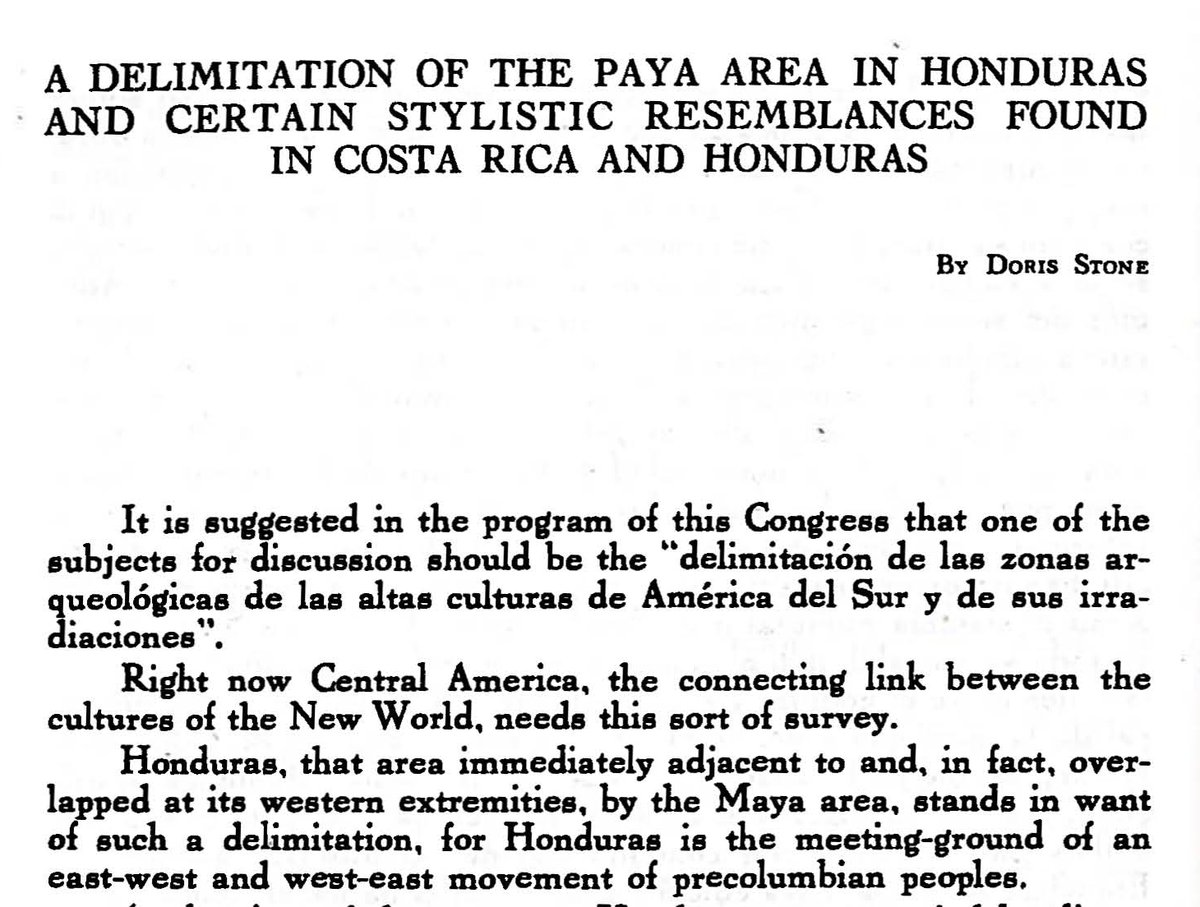
However, Doris Stone's prior research and interpretations were barely mentioned in Douglas Preston's bestselling book "The Lost City of the Monkey God," where her name appears only in a footnote (on p. 58). Was gender a factor in the erasure of her work?
#LostCityOfTheMonkeyGod
#LostCityOfTheMonkeyGod
On January 8, 2017, @CBSSunday aired a piece called "Curse of the 'Lost City of the Monkey God'?"
Pay careful attention to the comments by archaeologist Rosemary Joyce (@rajoyceUCB).
The film is premiering on Halloween.
cbsnews.com/news/curse-of-…
#LostCityOfTheMonkeyGod
Pay careful attention to the comments by archaeologist Rosemary Joyce (@rajoyceUCB).
The film is premiering on Halloween.
cbsnews.com/news/curse-of-…
#LostCityOfTheMonkeyGod
The idea of a #LostCityOfTheMonkeyGod appeared in a 1940 story by Ted Morde for The American Weekly, a Sunday tabloid supplement to Hearst newspapers edited by A. Merritt, best known for his science fiction and fantasy novels, including ones about discovering lost cities. 





The main graphic for Morde's 1940 story was this image by the amazing fantasy illustrator Virgil Finlay, whose artwork graced countless works of pulp fiction. It was clearly inspired by the 1933 blockbuster film "King Kong."
#LostCityOfTheMonkeyGod
#LostCityOfTheMonkeyGod

The original "monkey god" hype, by drawing upon the imagery of "King Kong" (1933), played upon fears that we can now recognize as being frankly racist in origin. King Kong enforced a trope of the hypersexual Black man at a time when lynchings were common.
#LostCityOfTheMonkeyGod
#LostCityOfTheMonkeyGod

In fact, as is clear from Morde's article, the "monkey god" was actually a reference to Hanuman. George Gustave Heye, the collector who had sponsored Morde's expedition to Honduras, was seeking evidence for ancient connections between India and the Mayas.
#LostCityOfTheMonkeyGod
#LostCityOfTheMonkeyGod

The "Lost City of the Monkey God" hype, coming from a sensational and mostly false tabloid story, was always secondary to stories about a White City (Ciudad Blanca) in Honduran folklore. Did the quest for a "lost White City" have racist undertones?
#LostCityOfTheMonkeyGod
#LostCityOfTheMonkeyGod
The answer to that is "maybe." On December 1, 1925, The Los Angeles Times had announced that explorer Percy Fawcett was headed into the Amazon rain forest of Brazil in seach of a "lost white race."
Not just a lost white person, but a lost white race!
#LostCityOfTheMonkeyGod
Not just a lost white person, but a lost white race!
#LostCityOfTheMonkeyGod

On April 16, 1925, the Los Angeles Times reported that Percy Fawcett was searching for a hidden "lost race" in the Amazon. On April 21, it followed with a report that he expected to find evidence for worship of Norse gods in the Amazon. Lost white people?
#LostCityOfTheMonkeyGod

#LostCityOfTheMonkeyGod


In part due to the racist legacy of stories about the "lost continents" of Atlantis and Lemuria (embellished with Blavatsky's assertions about "root races," including Aryans), and also the Fawcett hype, "lost city" quests are tinged with white supremacy.
#LostCityOfTheMonkeyGod
#LostCityOfTheMonkeyGod
This is NOT saying that the search for the #LostCityOfTheMonkeyGod was in any way racially motivated. However, themes of colonialism, white supremacy, and toxic masculinity tend to accompany pulp-fiction-inspired sensationalism--including Indiana Jones (a parody of the genre).
The hyping of the #LostCityOfTheMonkeyGod continues to neglect the reality of the indigenous Pech, Tawakha, and Miskito who have occupied Mosquitia for millennia. In fact, one of the largest indigenous cities in Central America today is Puerto Cabezas, Nicaragua.
In fact, the Pech people of eastern Honduras are the most likely indigenous descendant community of the ancient settlements "discovered" in the #LostCityOfTheMonkeyGod. They are not lost. They did not disappear. They persist.
en.wikipedia.org/wiki/Pech_peop…
en.wikipedia.org/wiki/Pech_peop…
What do the indigenous people of Mosquitia have to say about the #LostCityOfTheMonkeyGod (a.k.a. Ciudad Blanca)? Read this open letter (in Spanish) from a dozen Miskitu leaders of the Muskitia Asla Takanka, or“Unity of La Muskitia” (MASTA):
hrohblog.files.wordpress.com/2016/01/comuni…
hrohblog.files.wordpress.com/2016/01/comuni…
Here's an English translation of the January 13, 2016 open letter from the authorized representatives of the Miskitu People to the Government of Honduras and National Geographic. Note that I have translated "Rey Mono" as "Monkey God" for consistency.
#LostCityOfTheMonkeyGod

#LostCityOfTheMonkeyGod
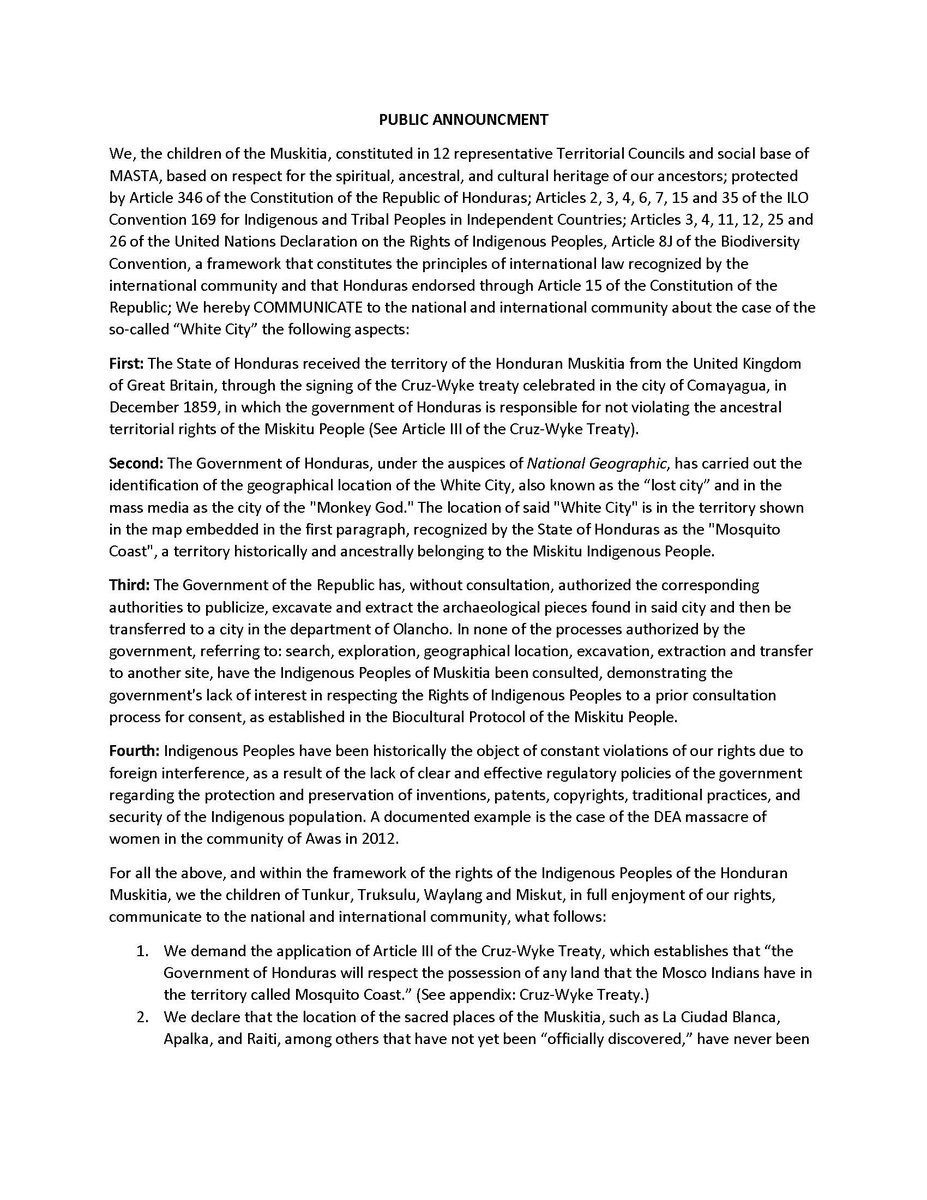

This should make it clear that the persistent, sensational presentation of this project--both in print and in film--as the "Lost City of the Monkey God," is offensive to the indigenous descendant community. Selling it as "spooky" on Halloween is awful.
#LostCityOfTheMonkeyGod
#LostCityOfTheMonkeyGod
Indigenous people should not be stereotyped and demeaned by referring to them or to indigenous culture as “spooky.” Have people not learned that lesson from degrading, racist Halloween costumes? Do we need to discuss that, too?
#LostCityOfTheMonkeyGod
#LostCityOfTheMonkeyGod
The objects Spinden photographed on the Río Plátano in Honduras in 1924 include cylindrical stone vessels decorated with carved heads of vultures.
#LostCityOfTheMonkeyGod

#LostCityOfTheMonkeyGod
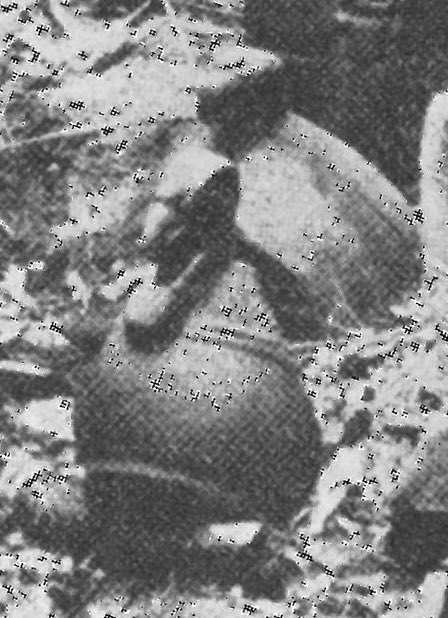

The objects Spinden photographed in Honduras in 1924 also include cylindrical stone vessels decorated with standing human figures.
#LostCityOfTheMonkeyGod

#LostCityOfTheMonkeyGod


The objects Spinden photographed also included huge tripod metates with tall legs and curved plates. There are examples at Harvard’s @peabodymuseum
#LostCityOfTheMonkeyGod
#LostCityOfTheMonkeyGod

So, claims that the #LostCityOfTheMonkeyGod represented a “previously unknown” and “lost” civilization are not an accurate representation of existing archaeological knowledge about Honduras or its larger geographic and cultural context.
en.m.wikipedia.org/wiki/Isthmo-Co…
en.m.wikipedia.org/wiki/Isthmo-Co…
It’s one thing to undertake LiDAR surveys to identify and document indigenous settlements—including cities—that are no longer occupied.
It’s another thing to search for a legendary “White City.”
en.m.wikipedia.org/wiki/La_Ciudad…
It’s another thing to search for a legendary “White City.”
en.m.wikipedia.org/wiki/La_Ciudad…
And then there’s the problem of how Fox News originally hyped the story.
foxnews.com/science/lost-c…
foxnews.com/science/lost-c…
LiDAR is definitely NOT an “El Dorado Machine.”
newyorker.com/magazine/2013/…
newyorker.com/magazine/2013/…
The LiDAR studies that merit well-produced documentaries are ones such as this project by Takeshi Inomata and his team, which includes Juan Carlos Fernández-Díaz, the NCALM engineer on the LiDAR project in Honduras.
sci-news.com/archaeology/li…
sci-news.com/archaeology/li…
Speaking of LiDAR and “lost cities,” how about that indigenous “lost city” in Newark, Ohio? Even though the first map of it was published by Squier and Davis in 1848, most Americans have never heard of it.
ohioarchaeology.org/articles-and-a…
ohioarchaeology.org/articles-and-a…
Or that 3800-year-old indigenous “lost city,” now documented with high-resolution LiDAR imagery, that’s a UNESCO World Heritage site in Louisiana? Most Americans don’t have a clue.
64parishes.org/entry-image/li…
64parishes.org/entry-image/li…
Around the time of all the hype about the #LostCityOfTheMonkeyGod, archaeologists had detailed LiDAR imagery documenting new features at the “lost city” of Cahokia, in Illinois.
westerndigs.org/ceremonial-axi…
westerndigs.org/ceremonial-axi…
This is another phenomenal recent application of LiDAR, the identification by Stephen Houston of a Teotihuacan-style compound—with Teo-style artifacts—at Tikal in Guatemala.
cambridge.org/core/journals/…
cambridge.org/core/journals/…
Who Signed the Letter from International Scholars?
I did, for one.
realhonduranarchaeology.wordpress.com/who-signed-the…
I did, for one.
realhonduranarchaeology.wordpress.com/who-signed-the…
“Fawcett Party Will Pose as Gods to Overawe Savage Natives”
SMDH
SMDH
From the eastern U.S. to Mexico, Honduras, and Brazil, archaeological research using LiDAR is revealing the complexity of indigenous cultures and the size of their populations across the Americas long before Columbus “discovered” anything.
livescience.com/amp/clock-face…
livescience.com/amp/clock-face…
Désiré Charnay, one of the original “discoverers” of ancient cities in the “New World,” was a protégé of white supremacist Eugène Viollet-le-Duc.
Charnay, following Viollet-le-Duc, identified the Toltecs as light-skinned immigrants of a superior race that had migrated to Mexico from the Himalayas.
His predecessor the Abbé Charles Étienne Brasseur de Bourboug, who “discovered” the Popol Vuh, the Rabinal Achi, and the Annals of the Cakchiquels, thought the Mayas had come from Plato’s “lost continent” of Atlantis. 

An excellent 2013 blog post by @JasonColavito on the mythology of the White City.
#LostCityOfTheMonkeyGod
On the Development of the Ciudad Blanca Myth
jasoncolavito.com/blog/on-the-de…
#LostCityOfTheMonkeyGod
On the Development of the Ciudad Blanca Myth
jasoncolavito.com/blog/on-the-de…
A 2016 podcast on ArchyFantasies.
#LostCityOfTheMonkeyGod
Chris Begley and the Lost City of the Monkey God - Episode 49
archaeologypodcastnetwork.com/pseudo/49
#LostCityOfTheMonkeyGod
Chris Begley and the Lost City of the Monkey God - Episode 49
archaeologypodcastnetwork.com/pseudo/49
One of the racist myths of the day was that superior races came from high altitudes and mountains while inferior races came from lowlands and swamps.
In Honduras, the #LostCityOfTheMonkeyGod is known as #KahaKamasa (“White House” in Miskitu). Artifacts and both physical and digital reconstructions are being exhibited to the public.
https://twitter.com/marilynmendezm/status/1169735625731239936
The story of Kaha Kamasa, a.k.a. #CiudadBlanca is so popular in Honduras that it’s being used as a brand to market high-quality chocolate bars.
#LostCityOfTheMonkeyGod
iconosmag.com/categoria-actu…
#LostCityOfTheMonkeyGod
iconosmag.com/categoria-actu…
Kaha Kamasa is to the #LostCityOfTheMonkeyGod in Honduras much like Kuhikugu is to Percy Fawcett’s #LostCityOfZ in Brazil.
A good archaeologist’s rule-of-thumb is always, “Work from the known to the unknown.”
It’s better to work with indigenous people.
en.wikipedia.org/wiki/Kuhikugu
A good archaeologist’s rule-of-thumb is always, “Work from the known to the unknown.”
It’s better to work with indigenous people.
en.wikipedia.org/wiki/Kuhikugu
As David Hurst Thomas said, “It’s not what you find, it’s what you find out.”
In 1994, John Noble Wilford wrote this story for the New York Times about another sensationalized archaeological discovery in eastern Honduras: the Cave of the Glowing Skulls.
nytimes.com/1994/10/04/sci…
nytimes.com/1994/10/04/sci…
“Archeologists winced at the appellation, and acknowledged that the arrangement had its stresses and strains, but felt they had little choice.”
Some significant perspective: a blog post by archaeologist Chris Begley from March 15, 2015.
The Pech and Archaeology in the Mosquitia
realhonduranarchaeology.wordpress.com/2015/03/15/the…
The Pech and Archaeology in the Mosquitia
realhonduranarchaeology.wordpress.com/2015/03/15/the…
"The Pech already knew where every large site was located. Every single one. They knew where fruit trees grew, or where the good fishing holes were. They could find the little trails that I could hardly see... They knew the forest like I know my hometown."
“'To the indigenous peoples, the thing that’s ‘lost’ in this lost city isn’t the city itself,' Begley said. 'It represents a kind of golden age, their lost autonomy, or hope, or opportunity.'”
newyorker.com/magazine/2013/…
newyorker.com/magazine/2013/…
Photographer Dave Yoder’s wonderful images from the expedition in eastern Honduras, which cost him good health.
#LostCityOfTheMonkeyGod
daveyoder.com/city-of-the-ja…
#LostCityOfTheMonkeyGod
daveyoder.com/city-of-the-ja…
Two of the large sites in eastern Honduras that had been mapped conventionally pre-LiDAR are Las Crucitas I and Las Crucitas II. Do either of these qualify as a "lost city"? Could either of these be the "White City"? There are several others.
#LostCityOfTheMonkeyGod

#LostCityOfTheMonkeyGod


For his 1999 doctoral dissertation, Chris Begley mapped these sites just 50 km west of where the main #LostCityOfTheMonkeyGod site was identified. Eastern Honduras has many sites with linear mounds, plazas, and ballcourts. The real story is how extensively occupied it once was. 




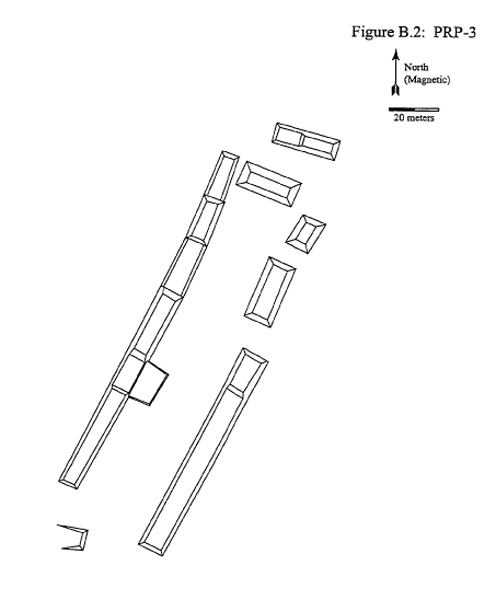
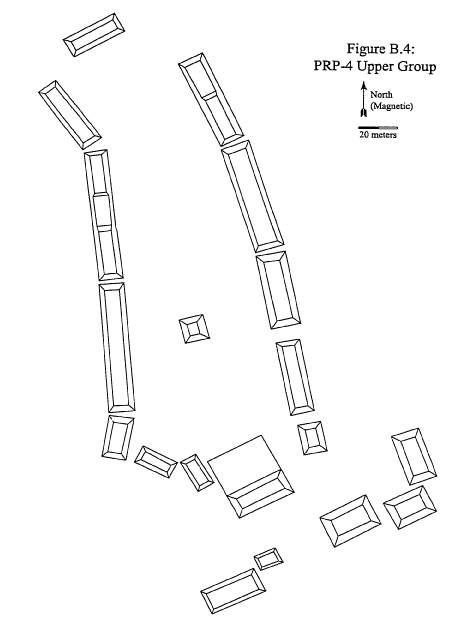

One of the things that most struck me about the artifacts found in eastern Honduras was how similar they were to examples reported by Hartman (1907) from Costa Rica. This is why Doris Stone wrote about connections between the Pech and Costa Rica in 1939.
#LostCityOfTheMonkeyGod

#LostCityOfTheMonkeyGod
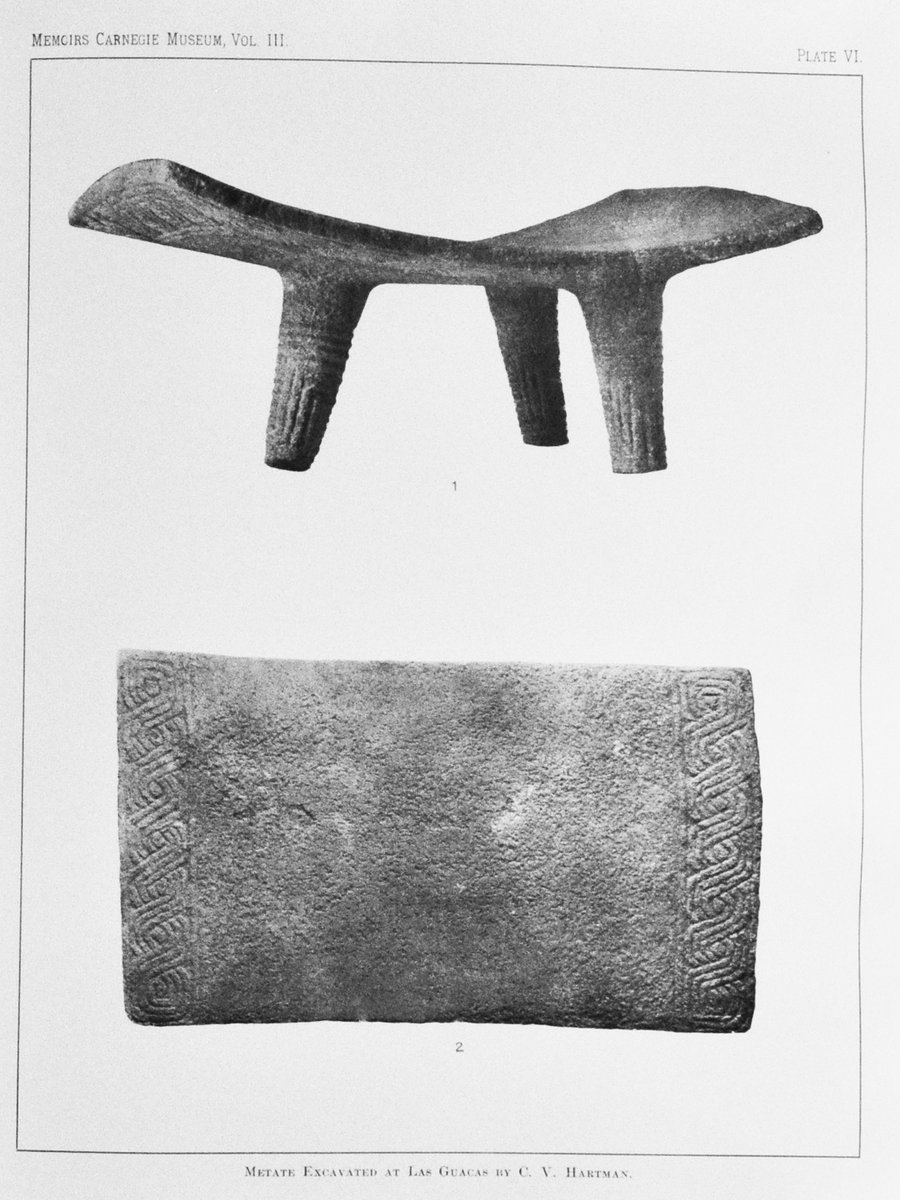

Note that one of these stone metates has a square knot motif on the bottom that is quite similar to one that appears on a metate support from the cache at the #LostCityOfTheMonkeyGod. This motif is also found on painted pottery vessels in Costa Rica. 



The archaeology of the Isthmo-Colombian Area may be obscure, but it is hardly unknown. People speaking languages in the Chibchan family occupied territory from eastern Honduras through Costa Rica and Panama to northern Colombia and even western Venezuela.
#LostCityOfTheMonkeyGod
#LostCityOfTheMonkeyGod
• • •
Missing some Tweet in this thread? You can try to
force a refresh




